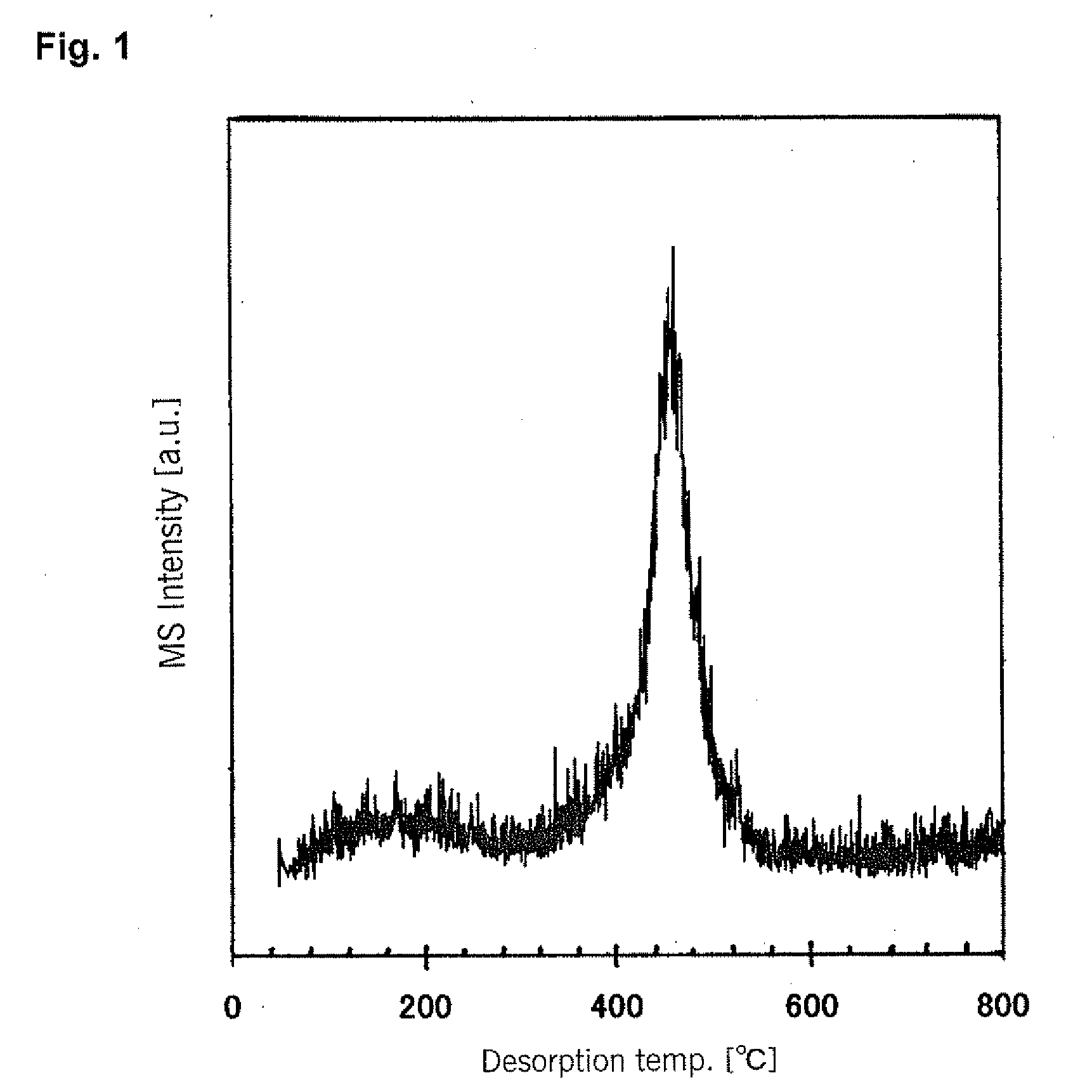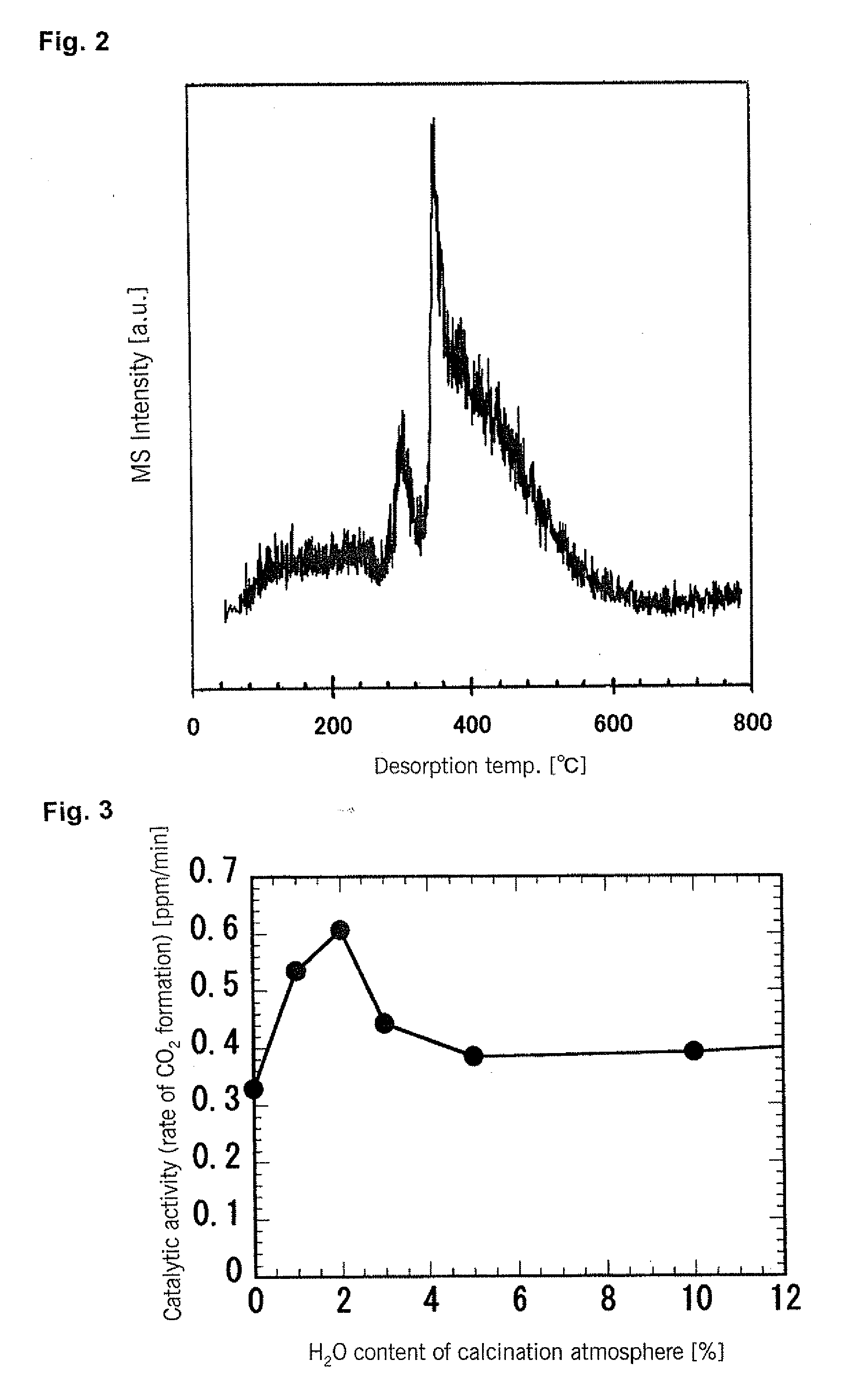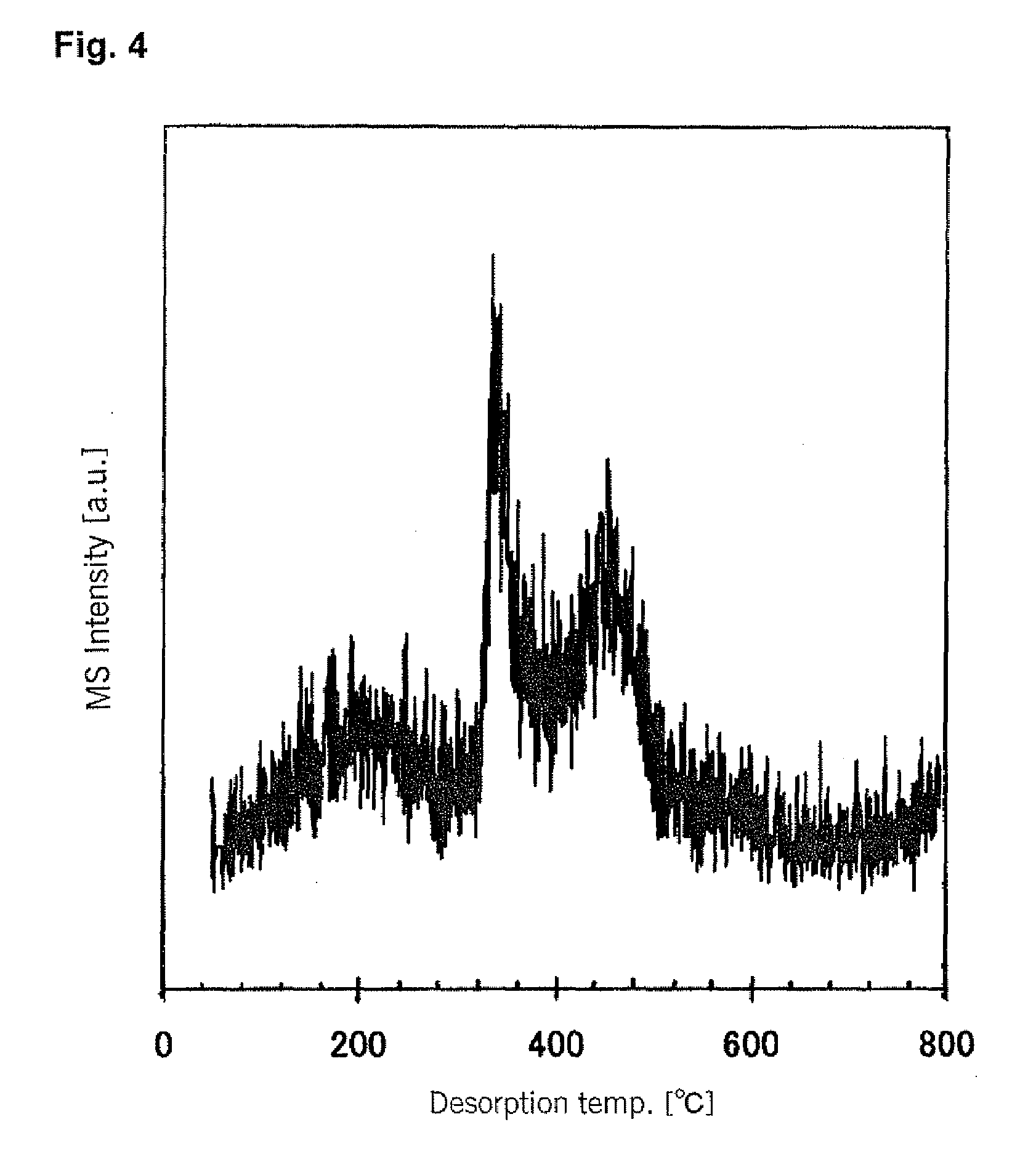Visible light response-type titanium oxide photocatalyst, method for manufacturing the visible light response-type titanium oxide photocatalyst, and use of the visible light response-type titanium oxide photocatalyst
- Summary
- Abstract
- Description
- Claims
- Application Information
AI Technical Summary
Benefits of technology
Problems solved by technology
Method used
Image
Examples
example 1
Preparation of a Titanium Oxide Photocatalyst
[0095]An aqueous TiCl4 solution (9.3% as Ti metal concentration) was neutralized by adding aqueous ammonia (14%) dropwise thereto with stirring at room temperature until the pH reached 4.2. The resulting neutralization reaction mixture was then aged by allowing to stand for 1 week (168 hours) at 20±3° C. The pH at the end of aging was 4.0, so the decrease in pH between before and after aging was 0.2. The solids which were precipitated were then collected by filtration with filter paper (5B), and after washing with water, they were vacuum dried at 80° C. to obtain a titanium (hydr)oxide powder for use as a raw material.
[0096]200 grams of the resulting raw material powder were placed into a kiln-type heat treatment apparatus, and after the atmosphere in the apparatus was replaced (purged) with nitrogen, the temperature was increased to 350° C. Then, a hydrogen gas containing 2.0 volume percent of TiCl4 as a hydrolyzable metal compound was i...
example 2
[0107]A titanium oxide photocatalyst was prepared in the same manner as in Example 1 except that the atmosphere for the second step heat treatment was a nitrogen atmosphere in which the moisture content was varied, and photocatalytic activity was measured by the same method except that the light source was a 500-watt mercury lamp. The results are compiled in FIG. 3. It can be seen that when the heat treatment is performed in a gas atmosphere having a moisture content in the range of 0.5-4.0 volume %, a titanium oxide photocatalyst having high visible light activity is obtained.
example 3
[0109]This example illustrates the production of a photocatalytic functional member according to the present invention.
[0110]Using a media mill, 20 parts of the titanium oxide photocatalyst prepared in Example 1 were dispersed in 180 parts of distilled water with the aid of zirconia beads measuring 0.1 mm in diameter to prepare a photocatalyst dispersion having a solids content of 10 weight %. The particle diameter of the titanium oxide photocatalyst in this dispersion was measured using a particle size analyzer (LA700) manufactured by Horiba, Ltd. and was found to be approximately 65 nm. The average particle diameter of the photocatalyst particles before dispersion treatment was approximately 35 μm.
[0111]To 100 parts of this photocatalyst dispersion, 40 parts of an aqueous solution containing methyltriethyloxysilane which had been partially hydrolyzed with nitric acid (solids content of 20 mass % as converted to SiO2), 5 parts of a silicone resin, 50 parts of ethanol, and a minute ...
PUM
| Property | Measurement | Unit |
|---|---|---|
| Temperature | aaaaa | aaaaa |
| Temperature | aaaaa | aaaaa |
| Temperature | aaaaa | aaaaa |
Abstract
Description
Claims
Application Information
 Login to View More
Login to View More - R&D
- Intellectual Property
- Life Sciences
- Materials
- Tech Scout
- Unparalleled Data Quality
- Higher Quality Content
- 60% Fewer Hallucinations
Browse by: Latest US Patents, China's latest patents, Technical Efficacy Thesaurus, Application Domain, Technology Topic, Popular Technical Reports.
© 2025 PatSnap. All rights reserved.Legal|Privacy policy|Modern Slavery Act Transparency Statement|Sitemap|About US| Contact US: help@patsnap.com



